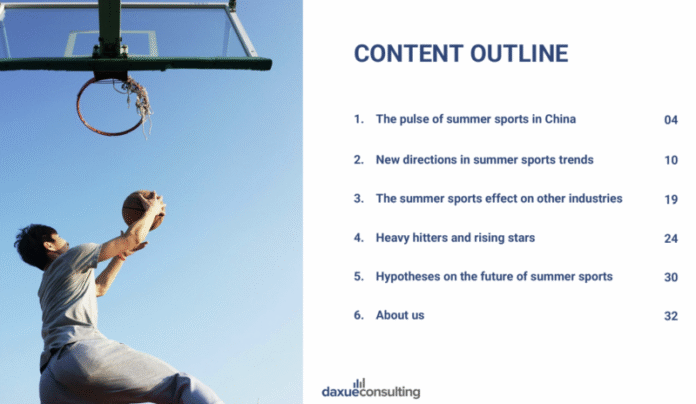Even though the broader apparel market in China is slowing, growing only by 0.8% year-over-year in January to June 2024, sportswear is an exception. As Chinese consumers prioritize health and leisure, they are spending more on sportswear. In 2023, the sportswear market in China reached RMB 492.6 billion (USD 68.8 billion), and it is projected to grow more rapidly than the non-sports apparel and footwear categories, reaching nearly RMB 600 billion (83.8 billion) in 2025.
Download our China Summer Sports Market report
Quality is crucial for Chinese consumers, and it is becoming the norm for brands to deliver. In response, brands have been investing in R&D and new technologies. Moreover, they are strengthening consumer engagement by creating spaces where people can exercise and connect with the brand. Nike and Adidas, which were once known for their superior quality. However, domestic brands such as Anta, Li-Ning, Xtep, and 361° have been investing more in quality, steadily increasing their market share in the first half of 2024. High-end and niche sportswear brands are also gaining traction. Lululemon’s revenue in China grew by 36% in the third quarter of 2024, while international niche brands like Hoka and On are becoming increasingly popular.
A nationwide surge in sports participation China
According to the National Bureau of Statistics, China’s sports participation rate has surged from 30.9% in 2018 to 49.6% in 2024. Not only did Covid-19 drive people to prioritize their health more, but the strong government push has further increased its reach and impact. In July 2021, the government launched the 2021-2025 National Fitness Plan (全民健身运动) to tackle barriers such as inadequate sports facilities and limited access to venues. Through initiatives like building sports parks and expanding fitness trails, the plan ensures that residents can reach a sports facility within a 15-minute walk. As a result, in 2023, China had a total of 4.6 million sports venues.
It also promotes youth-oriented sports education. Under the 2022 national curriculum, schools have introduced new sports like skateboarding, climbing, and roller skating to diversify physical education and spark student interest. Additionally, cities such as Shanghai have rolled out inclusive fitness programs for the elderly and disabled populations, including wheelchair basketball and adaptive equipment zones in public parks.
Running as a sport and a way to connect with community
Running is the top sport in China, with 51.9% participation, according to the National Bureau of Statistics. The continued popularity of marathons and trail running events has driven the sales of running-related products. JD.com data reveals that running shoes accounted for over 40% of total sports footwear sales in 2024. In particular, specialized running shoes and trail running shoes have seen year-on-year sales growth of 162% and 100%, respectively. Consumers increasingly value advanced features, such as breathability, anti-slip soles, and shock absorption, with demand for these attributes rising by over 100% year-on-year.
Running in China is more than just a fitness trend—it’s a socially driven lifestyle. City marathons often double as tourism campaigns, with scenic routes passing landmarks like the Great Wall or West Lake, while trail races in rural areas attract white-collar workers seeking a weekend escape. Platforms like Xiaohongshu play a key role in this trend, as users actively share gear reviews, routes, and race experiences, forming a vibrant running community.
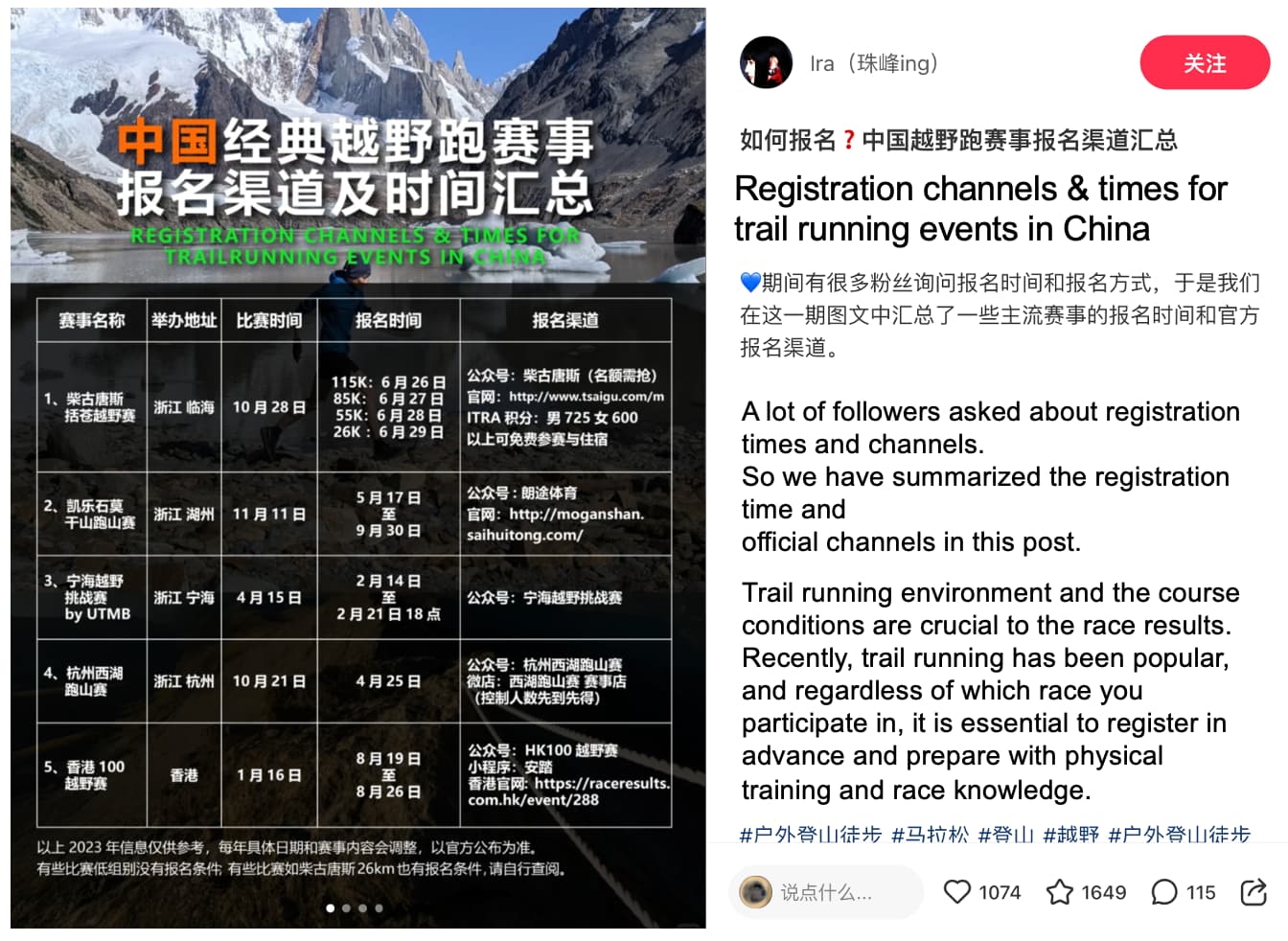
Outdoor sports surge driving technical sportswear sales
Young consumers are increasingly engaging in outdoor activities. In China’s summer sports market, everyday pursuits such as running, cycling, and hiking or mountaineering are particularly popular, driving demand for technical sportswear. In winter, skiing and snowboarding are also gaining traction, further fueling interest in specialized gear. For example, JD.com reported a 50% year-over-year increase in ski apparel sales and a 75% rise in cycling apparel sales in 2024. Overall, this highlights that Chinese consumers expect advanced performance, durability, and style as they embrace a more active lifestyle.
Athleisure for work and other everyday activities
Social media platforms like Xiaohongshu (also known as Little Red Book in China) and Douyin have reshaped consumer preferences, popularizing “athleisure” – a fusion of fashion and athletic apparel that become a dominant trend. Young consumers incorporate sportswear into everyday wear. According to 2024 data from Topsports, a leading sports goods distributor in China, 83.7% of Gen Z and Millennials wear hoodies and sweatpants, and 63.3% wear sports shoes.
The athleisure trend is particularly favored in settings, such as work commutes, casual shopping, and fitness activities, where comfort and versatility are key. For example, on Xiaohongshu, office wear tutorials often show how to pair joggers with shirts or hoodies with structured blazers to create “formal-enough” looks that fit both the workplace and daily errands.
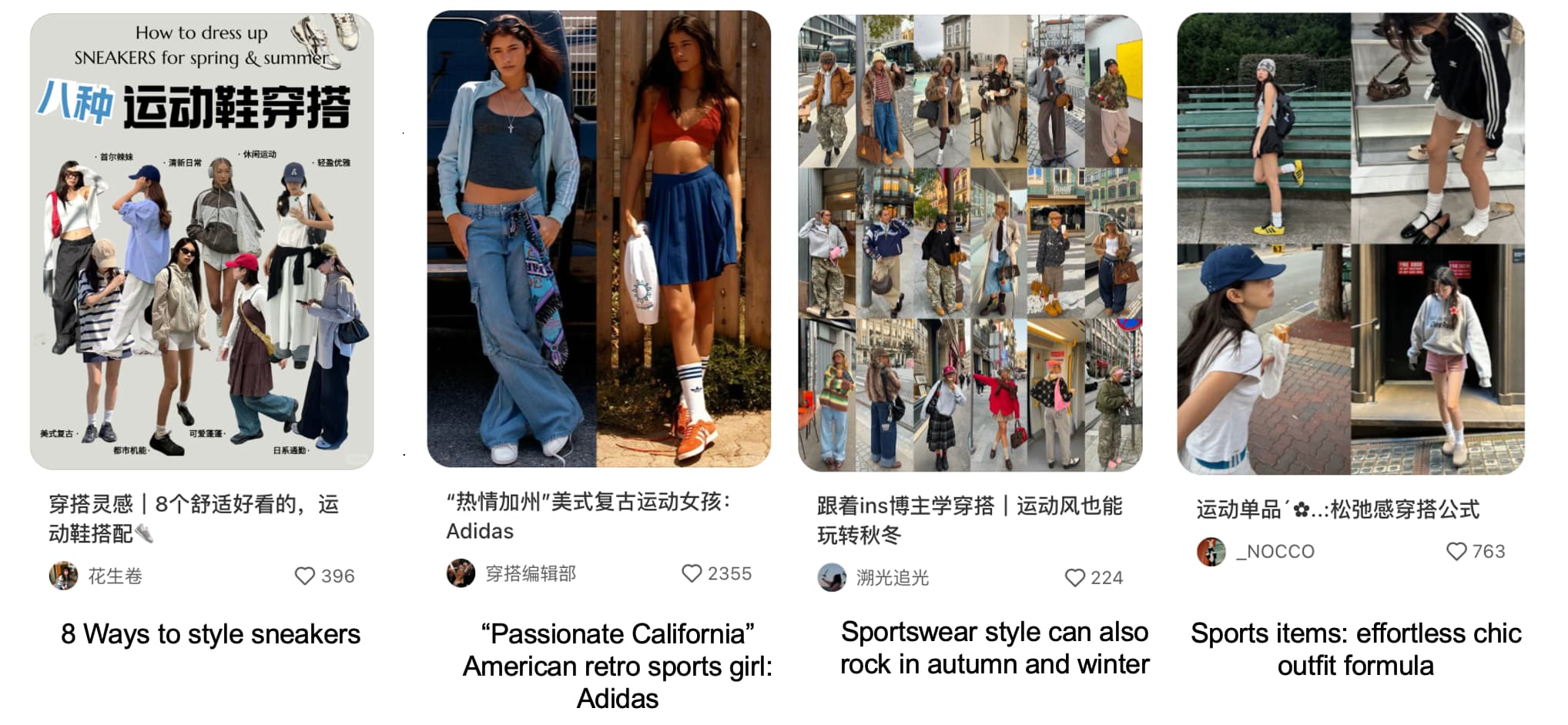
Tennis apparel booms in and off the court
Driven by Zheng Qinwen’s Olympic victory, tennis has seen explosive growth in China. The ITF Global Tennis Report 2024 shows China ranks second globally, with 19.8% of global tennis participation and 7.2% of total tennis courts. The country has 21 million active tennis players (around 1.5% of the population) as of 2024, presenting a significant growth opportunity in 2025.
Tennis apparel, which accounts for 56.2% of the overall tennis product market, is one of the few sportswear categories that seamlessly blends performance and fashion. This creates two key segments: on-court performance gear and off-court tennis-inspired lifestyle apparel. Tennis skirts, in particular, have become a trendy everyday item on Xiaohongshu, where users post outfit photos that often feature tenniswear styled for daily commuting, social events, or photo shoots—sometimes without any connection to the sport itself.
While the “Tenniscore” aesthetic is part of a global trend, its adoption in China has a distinctive twist: the look is often embraced more for its “clean girl” or “old money” visual appeal than for athletic function. This fashion-forward interpretation, paired with the popularity of affordable domestic brands, has made tennis skirts a go-to piece among young women. Tmall data reveals a 256% year-on-year increase in searches for “tennis skirt” and a 160% year-on-year rise in transactions during the 618 festival in 2024.
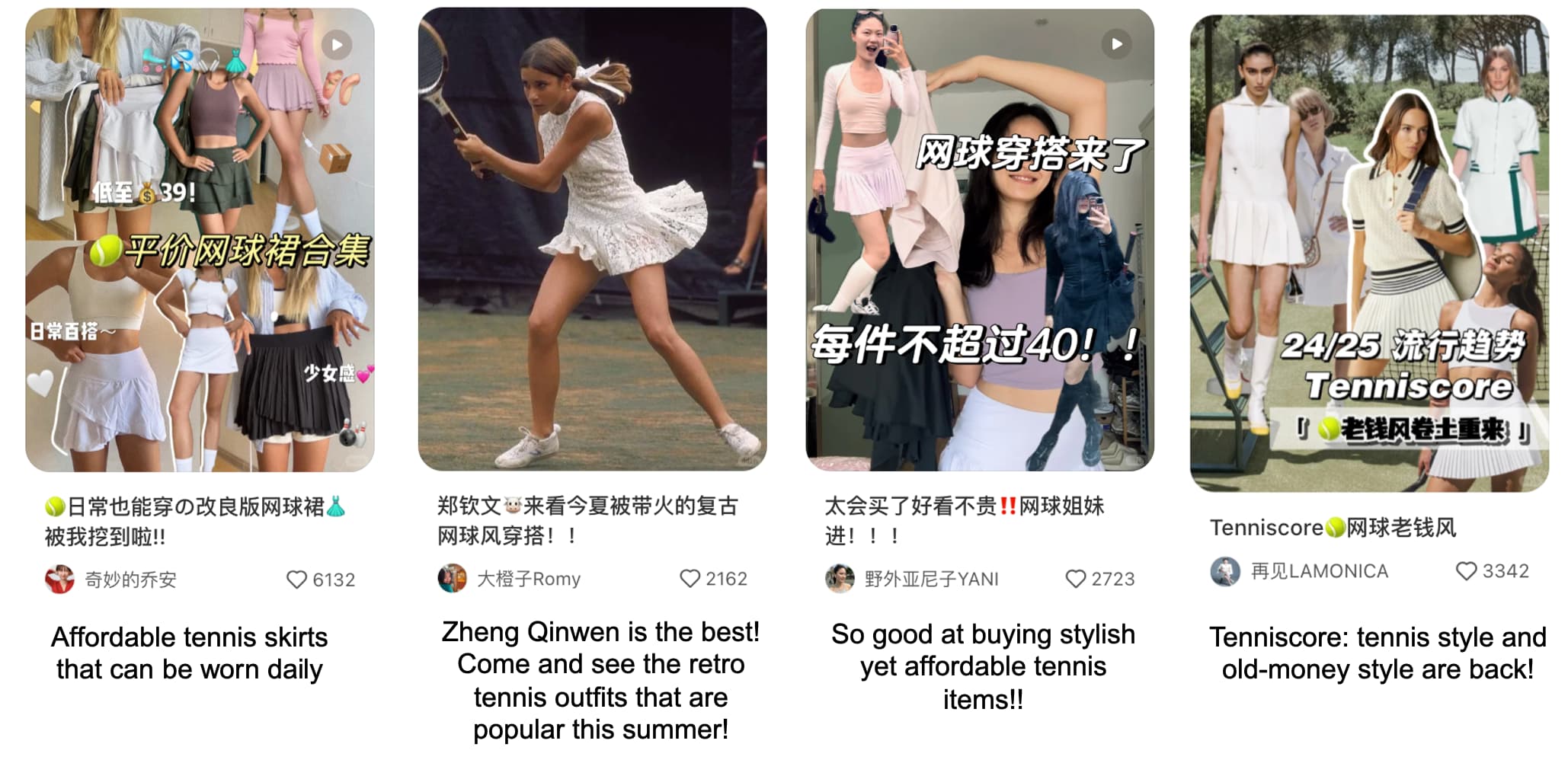
Technology as a key differentiator
As consumers become more knowledgeable about performance materials, brands are racing to develop proprietary innovations. Chinese brands are heavily investing in research and development (R&D), with Li-Ning, Anta, and Xtep increasing their technology budgets by 15.73%, 26.2%, and 33.3%, respectively, in 2023. By launching high-performance flagship products, these brands establish technological credibility in the sports innovation landscape. Following this, they gradually introduce advanced technologies into mass-market products, allowing premium innovations to drive broader consumer adoption. For instance, Xtep has successfully leveraged marathon sponsorships to enhance the market influence of its 160X racing shoes, positioning itself as a serious contender in the high-performance running footwear segment.
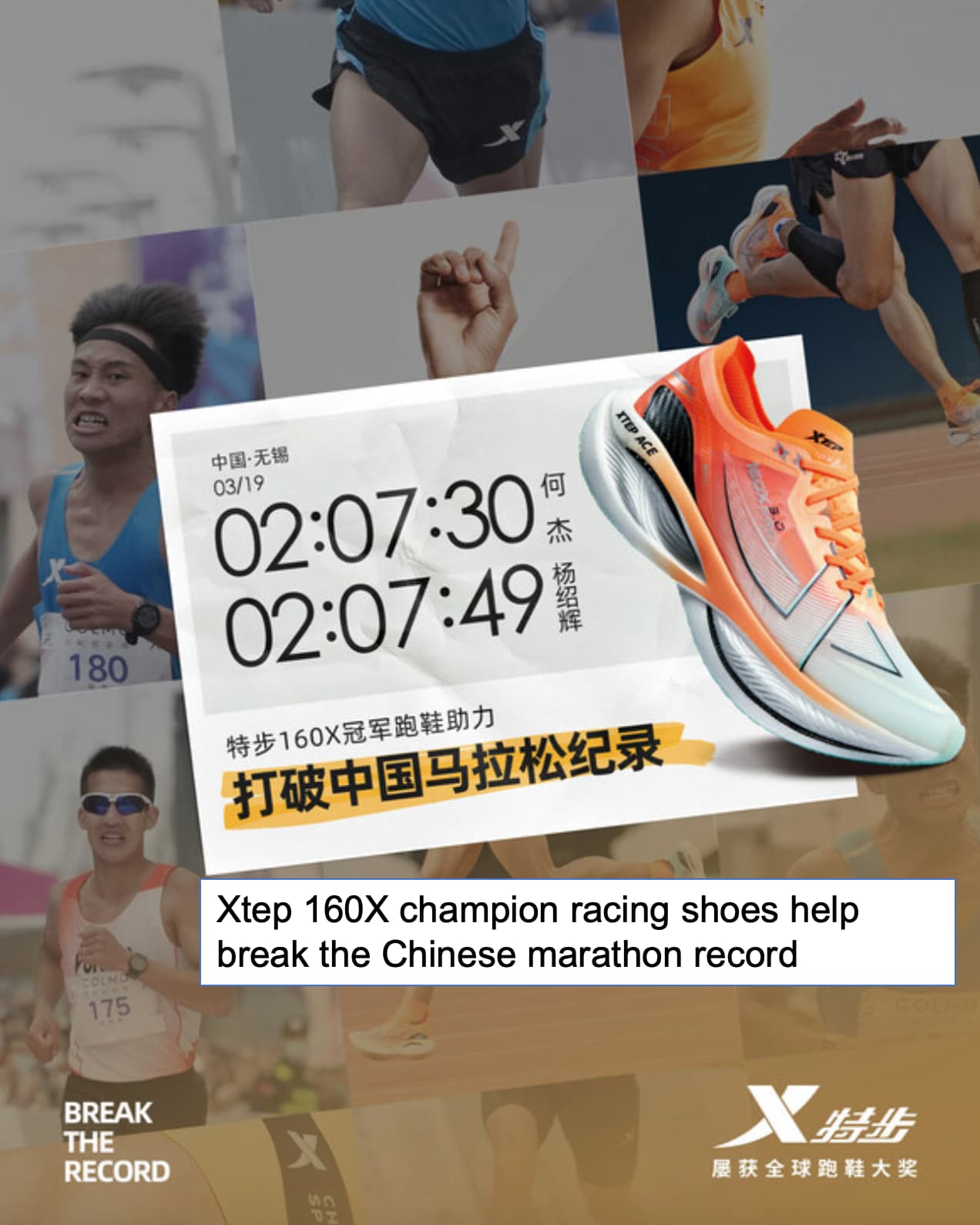
Sportswear brands in China focus on both technology and fashion
- China, the world’s second-largest sportswear market, demands quality products and experiences. Local and foreign brands are growing their share through strong local understanding and consumer-focused strategies.
- Running is the most popular sport in China, with consumers now prioritizing advanced features such as breathability, anti-slip soles, and shock absorption in their sportswear.
- Sports brands in China are increasingly focusing on enhancing the in-store experience, fostering brand loyalty, and deepening consumer engagement.
- Sports fashion continues to dominate the market, as athleisure blurs the lines between fitness and casual wear.
- Tennis apparel is gaining traction due to the sport’s rising popularity and its seamless blend of performance and fashion.
- Chinese sportswear brands are investing heavily in R&D, with Li-Ning, Anta, and Xtep increasing their technology budgets.

